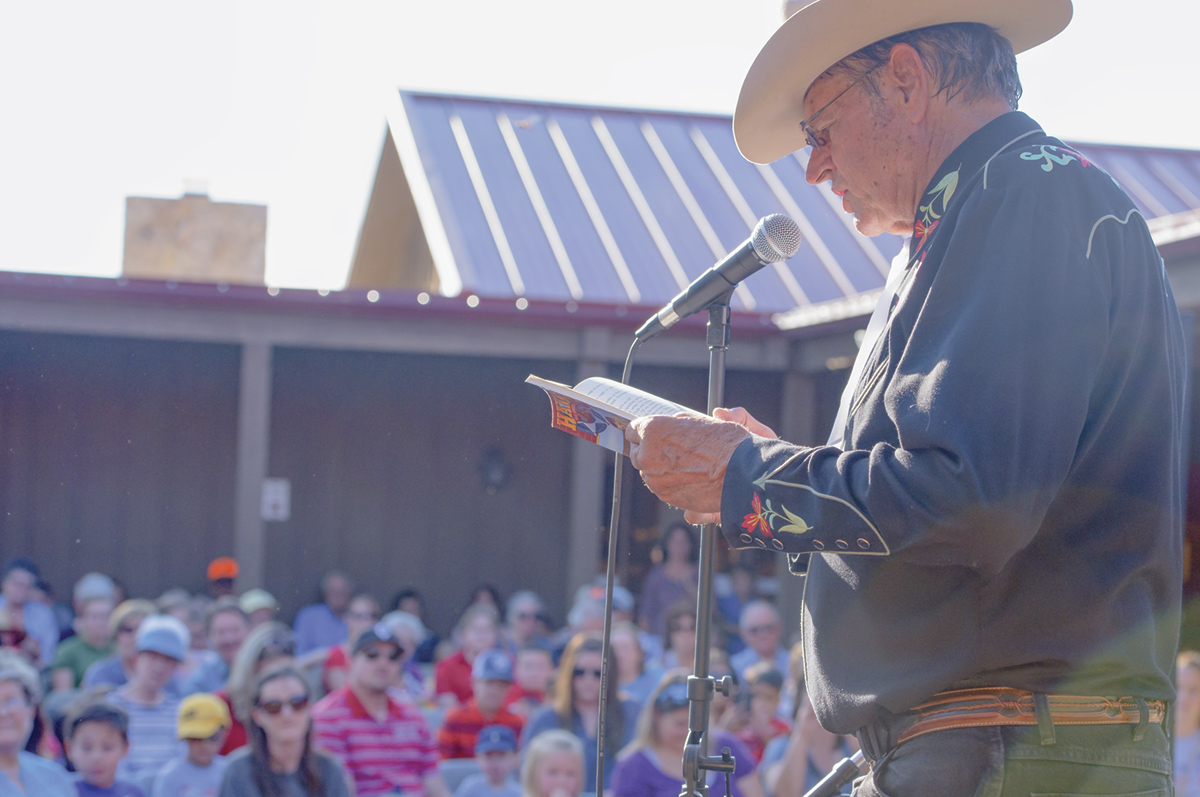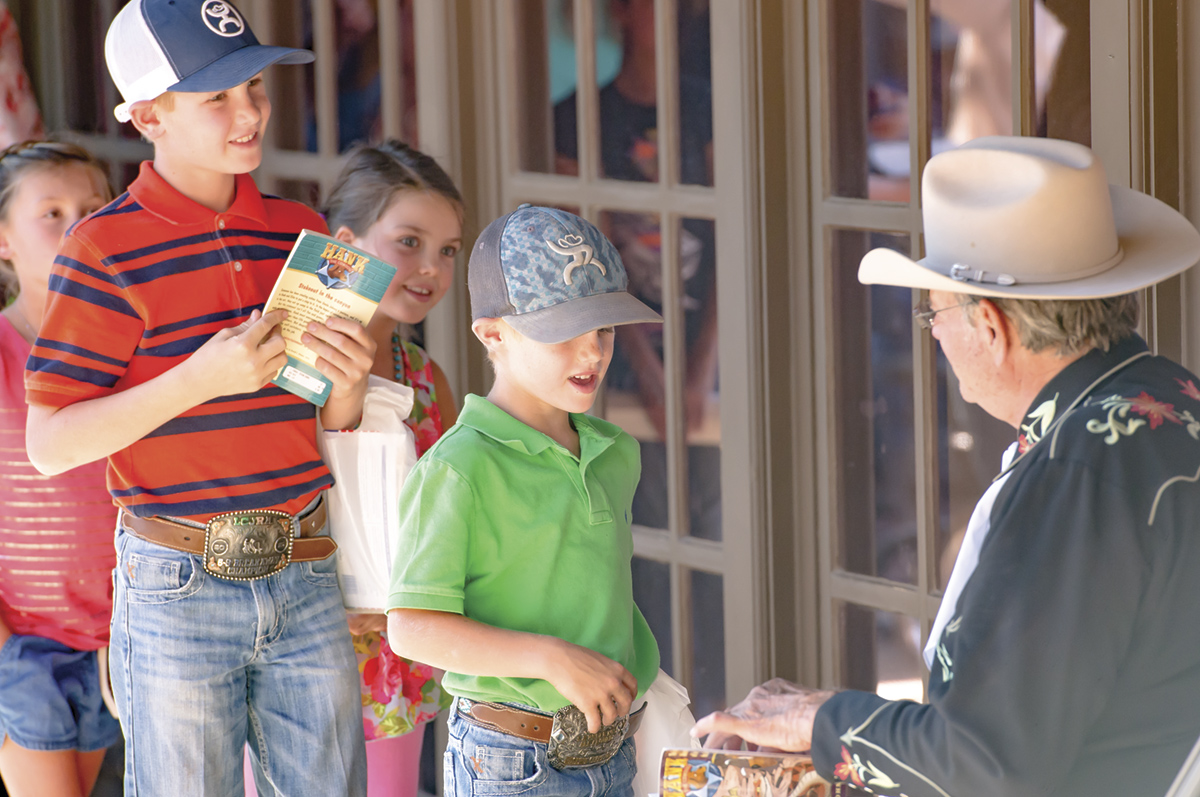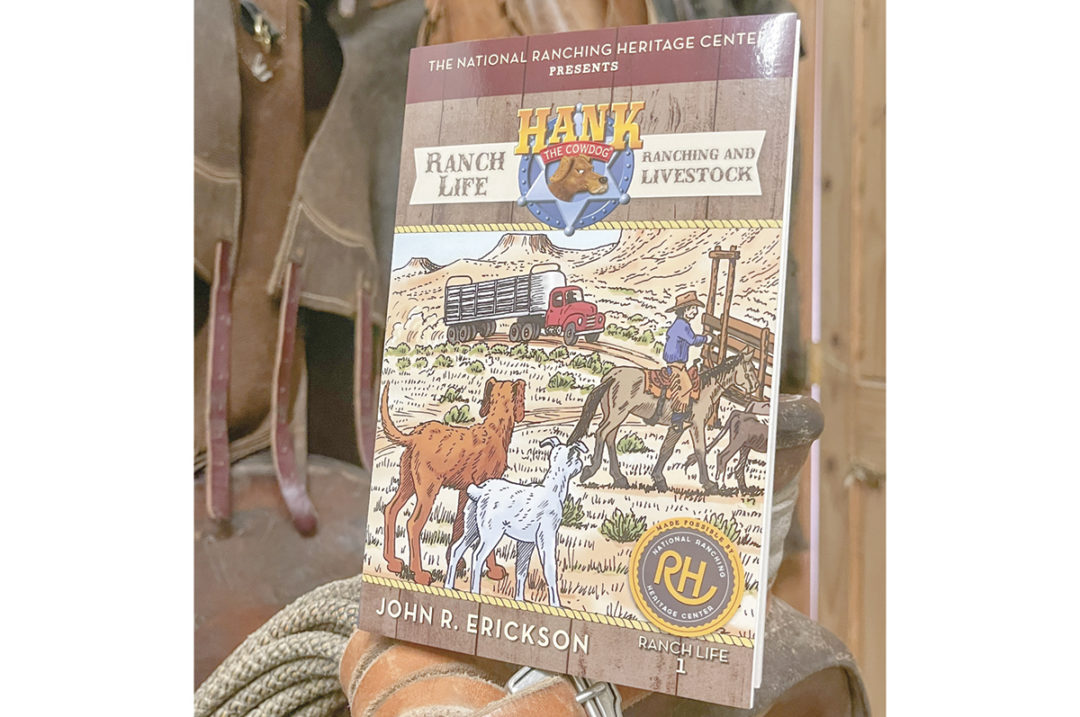The National Ranching Heritage Center in Lubbock, Texas, serves as a place to relive and preserve the past and understand the present and future of the ranching industry. At the center, 55 historical structures from real ranches allow visitors to take a walk through time, beginning in the 1780s all the way to modern day. Through a partnership with John Erickson, author of the beloved Hank the Cowdog series, the story of ranching is spreading far beyond the heritage center and into the minds of school children, one book at a time.
Julie Hodges, Helen Devitt Jones endowed director of education at the National Ranching Heritage Center, grew up listening to audiobooks of the Hank the Cowdog series. Shortly after she began working for the center, she decided to use the excuse to connect with Erickson and see if they could do an event together.
In 2014, Erickson and his wife came to the center to do a concert and book signing. Neither Hodges nor Erickson knew the impact this event would have. “It was wild,” Hodges says. “It was a Tuesday afternoon at 4 o'clock and over 1,000 people showed up for the concert and book signing.” Both agreed that Hank and the center made a great pair and decided to see what further collaboration could bring.
Birth of the Ranch Life Learning series
About 15 years previous, Erickson had written three educational books, geared toward grade-school children, about the ranching lifestyle and its common friends and enemies all through the eyes of Hank. “I decided I needed to figure out a way to share my knowledge,” Erickson says. “I'm a big believer that ranch people should be allowed to tell our own story without the ‘adult supervision’ of anybody from New York or Los Angeles. And so, I started writing these books about ranch life. But nobody wanted to hear from John Erickson – they wanted to hear from Hank the Cowdog, so I let Hank tell the story. They were still factual and accurate, but they were also funny.”
He didn’t know quite what to do with the books as they were different from the other Hank books, but he knew he wanted them to go into the hands of people that would use the books for the betterment of the ranching industry. Soon after Erickson's visit to the National Ranching Heritage Center, he decided to send three Word documents that are now known as the Ranch Life Learning series to Hodges. She immediately loved them and knew she could do something with them. “I thought, ‘These are amazing,’” Hodges says. “There's so much science, so much social studies. This is Hank doing my job for me.”

More than 1,000 people attended Erickson’s concert and book signing at the National Ranching Heritage Center. Photo courtesy of the National Ranching Heritage Center.
In September 2017, the first book of the series, Ranching and Livestock, was published and the next two, Cowboys and Horses and Ranch Wildlife, shortly followed. By that time, Erickson had thought of another idea for a book to add to the series called Ranch Weather. One last book, Prairie Fires, completed the five-book series, which Erickson wrote after a firsthand experience with a range fire that destroyed most of his own ranch south of Perryton, Texas.
As each book came out, Hodges and Erickson worked together to raise funds for about 2,000 to 5,000 copies of each book to be placed in Lubbock and the surrounding area schools. Their efforts to educate youth about ranching did not stop there. Hodges quickly contacted curriculum writers and began creating lessons and activities that paired with each book, making the books not just something kids could read but something teachers could use in the classroom.
Hank enters the classroom
Aligning information about ranching with educational standards of social studies and science for elementary students was a critical part of the development process. Michelle Sedberry, a STEM coordinator, and Jenny Gaona, a social studies content specialist, both residing in Texas, took on the challenge.
“I think the first thing we did was read the books in their entirety because we wanted to make sure that we weren't trying to fit a square into a round hole; we wanted to make sure everything complemented each other,” Gaona says.
They began to brainstorm and start to connect things like animal life cycles and the economics of ranching to standardized curriculum. They found that often the science and social studies components could be taught together in the same story or ranching element. They loved this, as most elementary teachers must balance multiple school subjects in their classes.
“A very unique piece of the Hank the Cowdog curriculum is it's very adaptable to every grade level, and you don't typically see that in a curriculum,” Sedberry says. “So that also makes them really special.”
Bobby Barron, a fifth-grade teacher at Kelley Elementary in Denver City, Texas, has used the Hank curriculum in his classrooms and is planning to implement more of the lessons this year. He says one of the things that especially helps students understand and get excited about the different subjects is the “Head of Ranch Security briefing” Hank gives in his usual humor-filled style at the beginning of each lesson to explain the activity or problem students have to solve.
Ranch Wildlife is one of the books Barron’s classes have really enjoyed and so has he. One of the activities is helping Hank identify which animal is stealing from the ranch. Students are given footprints as they learn about each animal, then they try to match it with the culprit.
“If it’s hands-on and they get to plan it themselves and work in a group, they love that,” Barron says. “They love experiments, and that’s the great thing about the Hank the Cowdog series – there is always some type of lab.”

One of Erickson’s priorities in creating the series was to share his knowledge and passion for ranching with the next generation. Photo courtesy of the National Ranching Heritage Center.
Hank’s next adventure
With a world increasingly removed from agriculture, the Ranch Life Learning series has brought ranching knowledge back to the next generation. Students are learning about feed rations, breeds of cattle, different types of grass and what makes a good ranch horse, all with Hank the Cowdog, Head of Ranch Security, leading the way.
Though this project has primarily been in Texas, the word is spreading. Over 65,000 books have been sold nationwide. Hodges has received calls from homeschool programs and schools in other states that have adopted the curriculum, and she is always surprised at the amount of interest people have shown with the little marketing that has been done. Ranch Life Learning is one of the most visited pages on the center’s website, with worksheets and lessons free for anyone to download and use.
A Hank the Cowdog podcast was created during COVID-19 for children to listen to, starring famous actor and Texas native Matthew McConaughey as Hank. It was the number-one podcast for children and family for a few months and has over a million downloads. Hodges contributed to the podcast by developing activities and reading strategies for children to do as they listened to each episode, once again channeling learning toward the ranching industry.
The latest project of the National Ranching Heritage Center and Hank the Cowdog is the Cash Family Ranch Life Learning Center, which has been in the planning and construction stage for about eight years. The grand opening is set for Oct. 12, with a complete indoor and outdoor exhibit that brings the Hank books to life.
The goal is to allow not only children, but visitors of all ages to walk through and learn about the different components of a ranch. Hodges says in the past people have come to the heritage center and asked, “So what exactly is a ranch?” or they assumed ranching was something that happened in the past. She realized that simple question had never quite been addressed – the center had primarily focused on the history of ranching, so the idea came to enhance the center’s mission and bring modern-day ranching to light – and no one would be a better tour guide than Hank.
“We're not an advocacy organization or a lobbying group,” Hodges says. “We're just a museum trying to share the story and the heritage of an industry. It’s so vitally important that we continue to use our voice to help educate people about the agricultural industry, especially with a focus on ranching. Our mission is to tell the story and preserve and interpret the history of ranching as well as address contemporary issues. So, what better way to do that than to talk to kiddos? They are the next generation of consumers, policymakers and folks in the industry. That’s really the ‘why’ behind it, so when these kiddos grow up, they have some good background knowledge to make decisions about their futures and about the future of the industry.”









